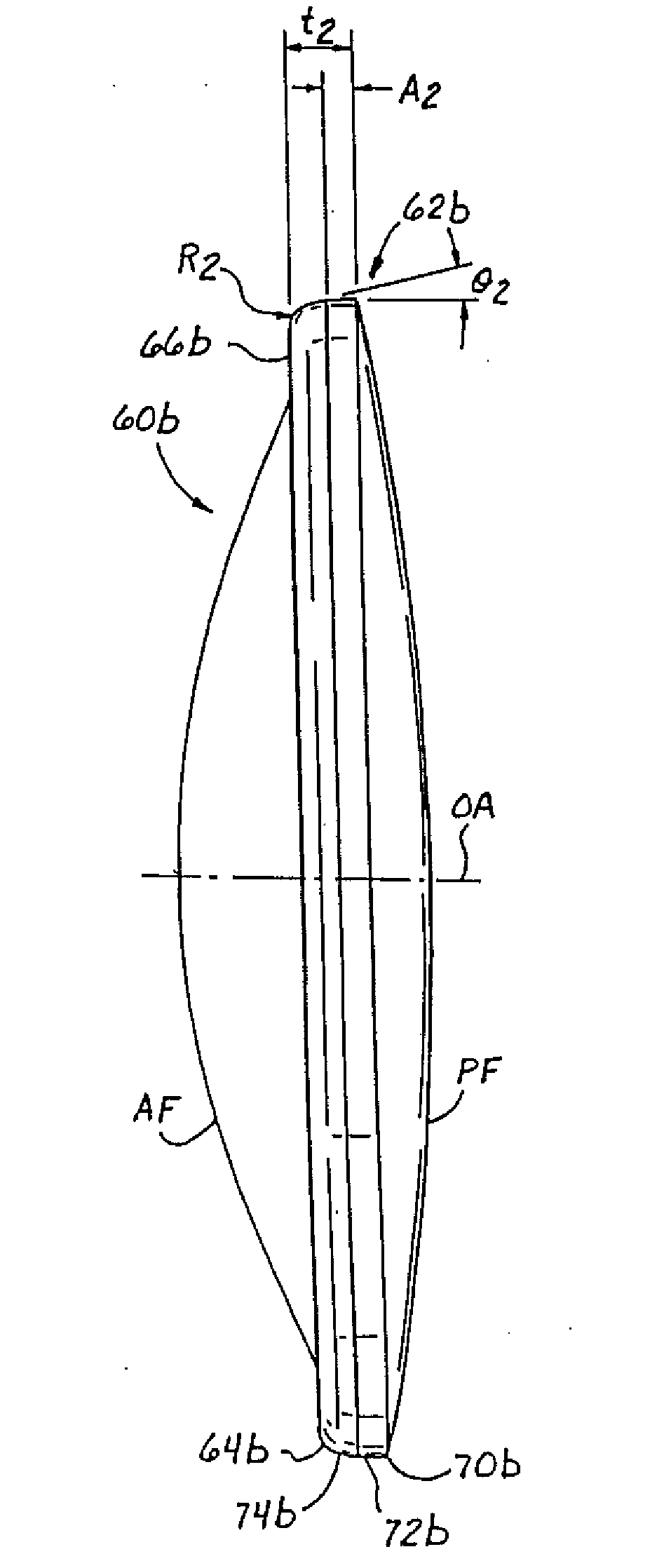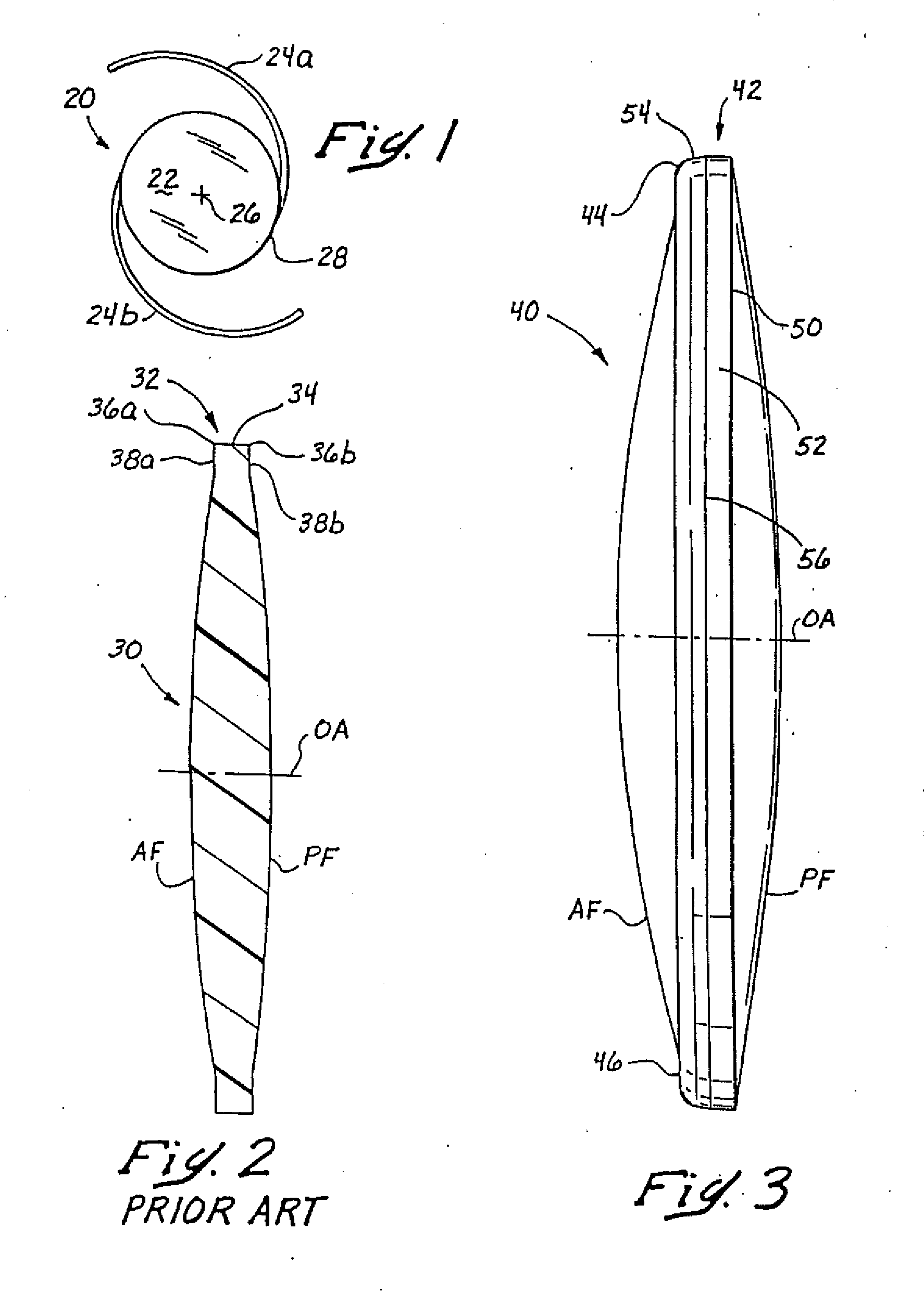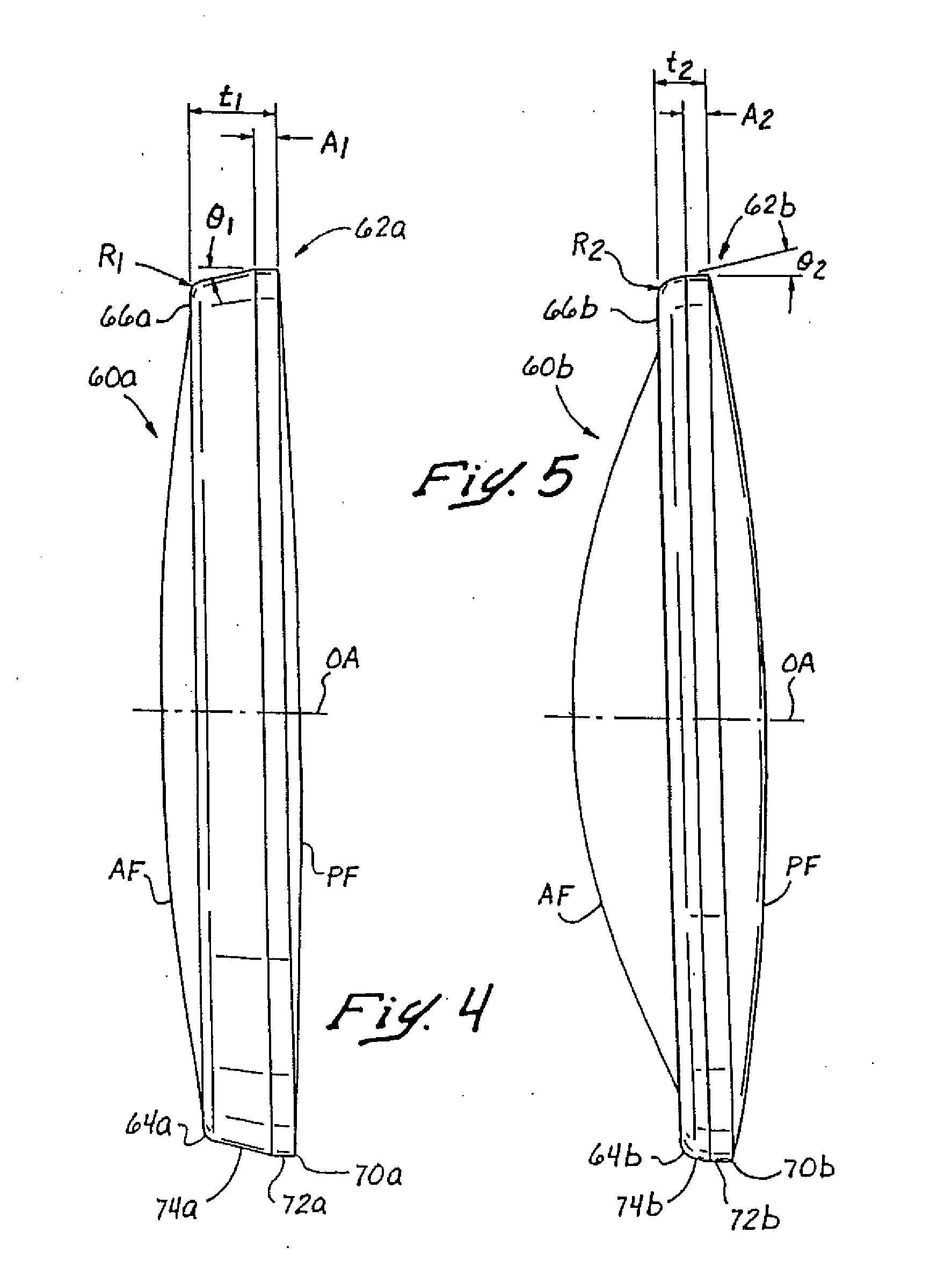Intraocular lens for inhibiting cell growth and reducing glare
a technology of intraocular lens and cell growth, which is applied in the field of intraocular lens for inhibiting cell growth and reducing glare, can solve the problems of affecting vision, affecting the optics of iol, and expensive lasers that are not available in the world, and achieves simple design and construction, inhibit cell growth, and reduce glare.
- Summary
- Abstract
- Description
- Claims
- Application Information
AI Technical Summary
Benefits of technology
Problems solved by technology
Method used
Image
Examples
Embodiment Construction
[0053]FIG. 1 shows an IOL 20 which generally comprises an optic 22 and fixation members 24a and 24b. In this embodiment, the optic 22 may be considered as effective for focusing light on or near the retina of the eye. Optical axis 26 passes through the center of optic 22 in a direction generally transverse to the plane of the optic.
[0054] In this embodiment, the optic 22 is circular in plan and bi-convex approaching the optical axis 26. However, this configuration is merely illustrative as other configurations and shapes may be employed. The optic 22 may be constructed of any of the commonly employed materials used for rigid optics, such as polymethylmethacrylate (PMMA), or commonly employed materials used for resiliently deformable optics, such as silicone polymeric materials, acrylic polymeric materials, hydrogel-forming polymeric materials, mixtures thereof and the like.
[0055] The fixation members 24a and 24b in this embodiment are generally C-shaped and are integral with the o...
PUM
 Login to View More
Login to View More Abstract
Description
Claims
Application Information
 Login to View More
Login to View More - R&D
- Intellectual Property
- Life Sciences
- Materials
- Tech Scout
- Unparalleled Data Quality
- Higher Quality Content
- 60% Fewer Hallucinations
Browse by: Latest US Patents, China's latest patents, Technical Efficacy Thesaurus, Application Domain, Technology Topic, Popular Technical Reports.
© 2025 PatSnap. All rights reserved.Legal|Privacy policy|Modern Slavery Act Transparency Statement|Sitemap|About US| Contact US: help@patsnap.com



